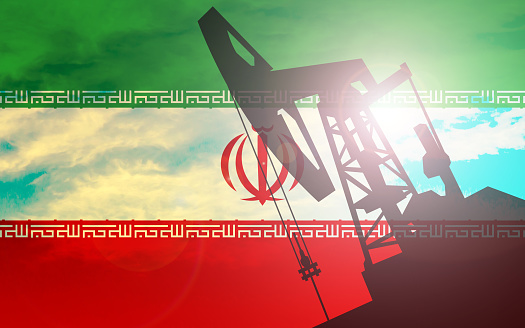It has been a rough, though not catastrophic week, for crude oil prices; front-month futures of the American benchmark for sweet light crude, also known as West Texas Intermediary of WTI, are currently on course for a slightly more than 3.0% drop on the week, which would mark the crude complex’s third worst weekly performance so far this year. Over the course of the week, WTI has slumped back from early Tuesday session highs at almost bang on the $67.00 level, to lows in early Friday trade of just under the $62.00 handle. In recent hours, crude has staged a pretty decent recovery from these weekly lows, however, and at the time of writing (shortly after Friday’s US market open), trades in the mid-$63.00s. That means it has managed hold above its 50DMA (at $62.60) for now, though is still some way of from reclaiming the 21DMA (at $64.23). From a technical perspective then, while this week’s losses clearly signal a break in recent upside momentum (indeed, a multi-week uptrend linking the 5th, 6th, 12th, 26th of April and 13th May lows has been broken to the downside), they do not appear to foretell a sustained sell-off. Afterall, the WTI continues to trade well within the bounds of the $58.00ish-$68.00 range that prices have been stuck within over the last three or so months. Technically speaking, consolidation within recent ranges seems like the most likely outcome in the coming weeks.
It’s been a choppy week for markets broadly, with equities selling off at time, cryptocurrencies taking a beating and industrial commodities also selling off for a variety of reasons, though the main driver of the downside in the latter two asset classes has been as a result of actions taken/rhetoric from Chinese authorities; for instance, Chinese authorities announced a ban on Chinese companies offering cryptocurrency related services (causing a sell-off in crypto markets) and have been jawboning about how they will act to prevent excessive, speculator driven increases in raw material/industrial metal prices, perhaps with increased oversight over trading activities in these markets. Downside in these asset classes has undoubtedly weighed on crude oil markets.
However, the main driver of this week’s sell-off in crude oil markets has been geopolitics. More precisely, the President of Iran said that the US is ready to lift sanctions on the country’s oil, banking and shipping sectors. For reference, Iran, the US and other global powers such as the EU and Russia have been in talks in Vienna about the prospect of the US and Iran returning to the 2015 Joint Comprehensive Plan of Action (JCPOA) nuclear deal – a deal which saw Western powers reduce sanctions on Iran in exchange for the country dialling down and providing access to its nuclear programme. Former US President Trump had previously pulled his country out of the deal in 2018 and imposed harsh sanctions, including restrictions on Iranian crude oil exports, forcing the country to reduce oil output. Thus, with the President of Iran announcing that the sanctions are ready to be lifted, crude oil markets have been bracing for an increase in supply, hence this week’s downside in prices. Note, however, that a final deal has not been reached just yet; European diplomats told the press that success on reaching a deal is still not guaranteed and difficult issues remained. But Iranian President Rouhani shrugged of these issues as minor, and markets very much expect an official announcement to be made in the coming days.
With a deal to lift sanction on oil exports in sight, news reports have been doing the rounds suggesting (as expected) that Iran is gearing up to increase oil exports to their maximum capacity in the months ahead. One report, citing intelligence from the Iranian National Oil Company (Iran’s state-owned oil producer, which is the second biggest oil producing company in the world after Saudi Arabia’s Aramco) suggested that Iran could increase oil production from current levels of 2.43 million bpd in April (according to the latest S&P Global Platts production survey) to 4 million bpd within three months. While announcement of a final deal certainly does risk triggering a fresh sell-off, analysts from quite a few different institutions have argued that an increase in Iranian crude oil exports is unlikely to have a significant long-term negative impact on crude oil prices. For example, ING argue that “while any announcement confirming the lifting of sanctions would likely hit sentiment further, we believe that this will be short-lived, given that the supply and demand balance remains supportive… a number of refiners, particularly those in India, are keen to resume purchases of Iranian crude oil once sanctions are lifted, with the expectation that favourable supply terms will be offered”. Moreover, analysts at SEB argue that “if the revival starts in Q3-21 then it should probably fit well with further global oil demand revival” and adding “what tickles our attention is the rapid revival of US oil product demand now being very close to the 2019”.
Perhaps part of the reason why oil market participants seemed so keen to scope up WTI futures at under $62.00 per barrel is just this line of thinking; Iran may be about to increase output, but demand growth in the coming months is going to more than outstrip this increase in output. Most economists and market analysts agree that the outlook for crude oil demand in North America and Europe is very strong in the coming months, given the two region’s rapid vaccine rollouts that pave the way for an easing of lockdowns heading into the summer peak driving/travel season. According to SEB, with US demand now is rapidly approaching 2019 levels, the “US alone will be soaking up almost all the added production increase of 2.1 million bpd from OPEC+ in May (+0.6 million bpd), June (+0.7 million bpd) and July (+0.841 million bpd) as the US moves from -1.7 million bpd below the 2019 level to now already almost on par with 2019”. Moreover, with the vaccine rollouts in the EU not that far behind in the US, “we can be quite confident that the EU will follow in the footsteps of the US in not too long”, the bank adds.
Another notable concern that has been weighing on crude oil prices this and last week is the ongoing spread of Covid-19 throughout emerging Asia, which are accelerated as a result of 1) the new, more transmissible Indian variant and 2) the fact that most of the region lags far behind the likes of North America and Europe in terms of its vaccine rollout, meaning the virus can spread unimpeded. South East Asian countries including Malaysia, Indonesia and Thailand are all struggling with record infection rates. However, offsetting concern about the state of the pandemic in South East Asia are signs in India, which has up until now been amongst the worst hit nations in the world by the Covid-19 virus this year, is seeing infection rates decline. Even if this does not reflect the acceleration in the spread of the virus in poorer, urban areas (which widely go unreported amid a lack of available tests), if the spread of the virus in urban areas has peaked, this raises the prospect that regions may start to ease lockdown restriction which had so badly damaged demand in the country, which is the world’s third largest crude oil consumer after China and the US. But it is early days to be optimistic about the situation in India and as long as concerns about the impact of the pandemic in Asia on crude oil demand in the region persist, crude oil may struggle to break above recent ranges.




